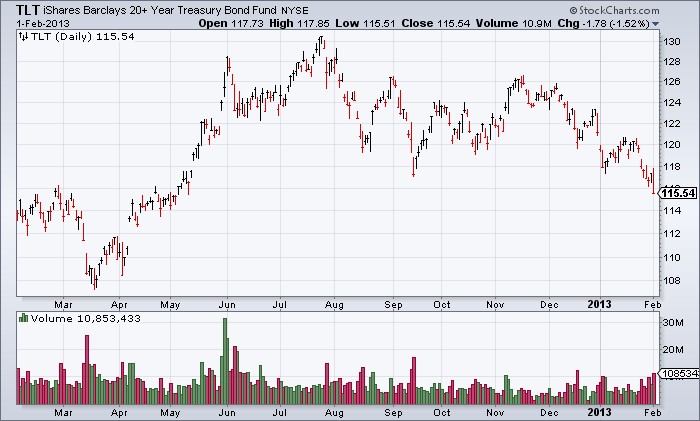Money and Markets Bond Market Research
Post on: 11 Май, 2015 No Comment

Ron Rowland | Thursday, June 9, 2011 at 7:30 am
This post was published 3 years, 9 months ago.
When you get a chance at two birds with one stone, it’s usually a good idea to take it. Three birds with one stone is even better!
Right now we have a shot at combining three of my favorite investing categories: International, ETFs, and bonds. So today we’ll take a closer look at five international bond ETFs. I think they’re all poised to outperform this summer.
I’ve found over the years that bonds are something of a mystery to most investors. People usually understand stocks, but bonds? Not so much. Nor are they very interested in learning.
The reason for this, I suspect, is that the very word “bond” just seems boring. You invest your money, you get interest payments every so often, and that’s it. Ho hum.
If all you ever do is sit back and wait for your monthly check, then yes, bonds are not much fun. Fortunately (or not, for some people) bond investing is rarely so simple. You can make and lose money just as fast in bonds as you can in stocks. It all depends what kind you buy.
Some types of bonds, like short-term U.S. Treasury bills, are so safe and steady that professionals call them “cash equivalents.” Others are much riskier but have the potential for big gains in the right circumstances.
Foreign bonds used to be pretty exotic for U.S. investors — even more than foreign stocks. Now, thanks to the Internet and new instruments like ETFs, it’s easy to add a slice of international fixed income to your portfolio.
Here are five ways you can do it …
#1: SPDR DB International
Inflation Protected Bond (WIP)
With gold and oil prices shooting higher, “Inflation Protected” sounds like a pretty nice feature. The U.S. has a popular category of Treasury bond with a built-in adjustment factor to compensate for lost value caused by inflation. Many other countries offer similar securities. WIP gives you a diversified portfolio of international inflation-protected bonds.
WIP has another advantage, too. If, like many people, you think the U.S. Consumer Price Index doesn’t measure inflation very accurately, WIP gives you exposure to various other methods. Every country has its own particular benchmark.
Short-term foreign government bond ETFs are essentially currency plays.
#2: SPDR Barclays Short-Term
International Treasury ETF (BWZ)
This ETF holds a portfolio of short-term (1-3 years) Treasury bonds from about 20 different countries. Because the average maturity is so short, BWZ is often more sensitive to currency fluctuations than interest rate changes. You can think of it as a foreign currency fund with extra yield.
#3: iShares JPMorgan USD
Emerging Markets Bond (EMB)
Yes, emerging markets have bonds as well as the more familiar stocks. And some may actually be safer than the bonds of debt-ridden “developed” nations.
EMB is the key to unlocking this neglected market. Because it focuses on bonds denominated in U.S. dollars, this ETF is not subject to currency-related swings.
Advertisement
However, if you want currency risk, take a look at …
#4: Market Vectors Emerging Markets
Local Currency Bond (EMLC)
EMLC is similar to EMB in some respects, but starkly different in one big way. It holds government bonds issued in the local currencies of selected emerging markets. Top holdings include debt from Brazil, Poland, Malaysia, and Mexico.
This ETF kicks out a higher dividend than most other bond funds, currently yielding 5.8 percent, and it is also a bet that the U.S. dollar will fall in value compared to emerging market currencies. Long-term, I think that’s a pretty good bet, but EMLC can have big swings in the meantime.
With ETFs, investors now have easy access to bonds issued by foreign companies.
#5: SPDR Barclays International
Corporate Bond (IBND)
Corporate bonds come in all flavors, and they’re not all American. IBND is fairly new — launched in May 2010 — but was still the first ETF of its kind. It’s designed to measure investment-grade corporate bond markets outside the U.S.
While IBND excludes dollar-denominated bonds, it does have some U.S. exposure. Some large American companies (especially banks) issue bonds in other currencies. IBND still provides mostly non-U.S. exposure, though.
Now, are international bond ETFs for everyone? No, absolutely not! It all depends on your personal goals and circumstances. If you think they may be what you need, I’ve given you five to check out. These are some of my favorites.
Best wishes,
Ron
P.S. If you’re interested in foreign bonds or foreign bond ETFs, you should look at the Weiss Sovereign Debt Ratings before investing. Click here to learn more.
Ron Rowland is widely regarded as a leading ETF and mutual fund advisor. You may have read about Mr. Rowland and his strategies in publications such as The Wall Street Journal. The New York Times. Investor’s Business Daily. Forbes.com. Barron’s. Hulbert Financial Digest and many more. As a former mutual fund manager from 2000 to 2002, Ron was a pioneer in using ETFs inside of mutual funds. Today, he is the editor of International ETF Trader . dedicated to helping investors use ETFs to profit from ever-changing global market conditions.














